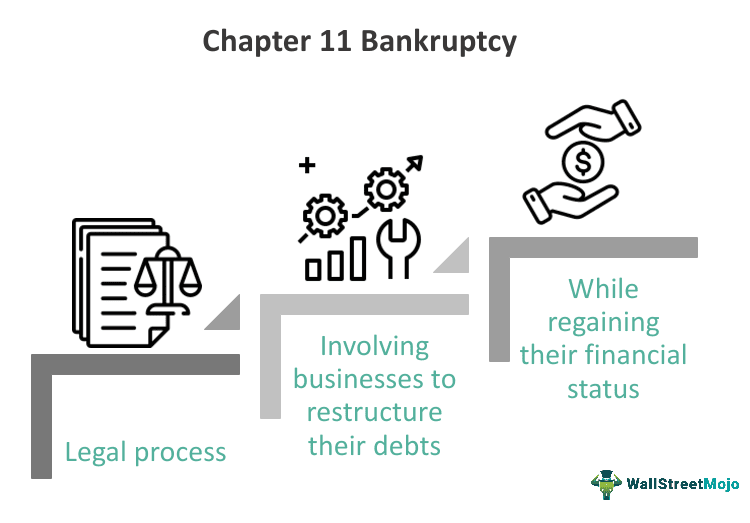In the dynamic world of technology, few advancements have reshaped how businesses and individuals operate as fundamentally as Cloud Computing. Once a niche concept, the cloud has evolved into the backbone of modern digital infrastructure, powering everything from streaming services and social media to complex enterprise applications and cutting-edge scientific research. At its core, Cloud Computing refers to the delivery of computing services—including servers, storage, databases, networking, software, analytics, and intelligence—over the Internet (“the cloud”) to offer faster innovation, flexible resources, and economies of scale. Instead of owning their own IT infrastructure or data centers, organizations can rent access to anything from applications to storage from a third-party provider. This shift from physical ownership to on-demand access has unlocked unprecedented levels of agility, efficiency, and innovation across industries worldwide. Understanding Cloud Computing is no longer just for IT professionals; it’s essential for anyone navigating the digital age. This comprehensive guide will explore the fundamental concepts, models, and benefits of Cloud Computing, delve into its various forms and applications, and discuss the key considerations for successful adoption, highlighting why it remains a critical force shaping the future of technology. Whether you’re a business owner looking to scale, an IT manager evaluating infrastructure options, or simply curious about the technology powering today’s digital world, delving into the realm of the cloud is a crucial step. The term in Vietnamese captures the essence of this technology, emphasizing the distributed, utility-like nature of computing resources accessed over a network.
Toc
Understanding Cloud Computing: What It Is and Why It Matters
At its heart, Cloud Computing simplifies the complex world of information technology. It democratizes access to powerful computing resources, making them available to anyone with an internet connection, regardless of their physical location or the scale of their operation. This fundamental shift from traditional, on-premises IT infrastructure represents one of the most significant transformations in computing since the advent of the personal computer.
The Fundamental Concept and Evolution of Cloud Computing

Imagine electricity or water utilities – you consume what you need, when you need it, without owning the power plant or reservoir. Cloud Computing applies a similar model to computing resources. Instead of investing heavily in physical servers, storage devices, networking equipment, and the necessary data centers to house them (traditional owned and managed by the user), users access these resources virtually over the internet. A third-party cloud provider owns and maintains the actual physical infrastructure. This abstraction allows users to focus on their core business activities rather than the complexities of managing hardware and software licenses.
The concept isn’t entirely new; time-sharing on mainframes in the past shared some principles. However, the modern era of Cloud Computing, as we know it, gained traction with the widespread availability of high-speed internet and advancements in virtualization technology. Companies like Amazon Web Services (AWS), Microsoft Azure, and Google Cloud Platform pioneered large-scale cloud services, offering compute power, storage, and databases as rentable utilities. This evolution has dramatically lowered the barrier to entry for businesses, enabling startups to access the same computing power as large enterprises, fostering innovation and accelerating digital transformation. The Vietnamese term beautifully illustrates this concept, evoking a sense of vast, shared resources residing remotely “in the clouds.”
Key Characteristics That Define the Cloud
According to the National Institute of Standards and Technology (NIST), Cloud Computing possesses five essential characteristics that differentiate it from traditional IT models:
- On-demand self-service: Consumers can unilaterally provision computing capabilities, such as server time and network storage, as needed automatically, without requiring human interaction with each service provider. This means users can quickly scale resources up or down through a simple web portal or API, granting immense flexibility.
- Broad network access: Capabilities are available over the network and accessed through standard mechanisms that promote use by heterogeneous thin or thick client platforms (e.g., mobile phones, laptops, PDAs). The cloud is accessible from virtually anywhere with an internet connection
- Resource pooling: The provider’s computing resources are pooled to serve multiple consumers using a multi-tenant model, with different physical and virtual resources dynamically assigned and reassigned according to consumer demand. This allows for efficient utilization of the underlying . Resources can include storage, processing, memory, and network bandwidth.
- Rapid elasticity: Capabilities can be elastically provisioned and released, in some cases automatically, to scale rapidly outward and inward commensurate with demand. To the consumer, the capabilities available for provisioning often appear to be unlimited and can be appropriated in any quantity at any time. This ability to quickly adjust resources is a major advantage for handling fluctuating workloads.
- Measured service: Cloud systems automatically control and optimize resource use by leveraging a metering capability at some level of abstraction appropriate to the type of service (e.g., storage, processing, bandwidth, active user accounts). Resource usage can be monitored, controlled, and reported, providing transparency for both the provider and consumer. This enables the pay-as-you-go model, where users only pay for the resources they actually consume, contributing significantly to the related to cost savings.
These characteristics collectively enable the agility, flexibility, and cost-efficiency that make Cloud Computing such a compelling proposition for organizations of all sizes.
The Driving Forces and Benefits of Cloud Adoption

The rapid and widespread adoption of Cloud Computing is driven by a compelling array of that address the limitations and challenges of traditional IT infrastructure.
- Cost Savings: This is often the most immediate and tangible benefit. By moving to the cloud, organizations can significantly reduce capital expenditures (CapEx) on hardware, software, and data center facilities. The operational expenditure (OpEx) model of paying only for consumed resources can be more predictable and cost-effective, especially for variable workloads. Reduced IT management overhead further contributes to cost savings.
- Scalability and Elasticity: Businesses can instantly scale their computing resources up or down based on demand. This is invaluable for handling traffic spikes (like during holiday sales or viral marketing campaigns) without over-provisioning infrastructure for peak load that sits idle most of the time.
- Flexibility and Agility: Accessing resources on demand provides unprecedented flexibility. New applications can be deployed rapidly, experiments can be run without large upfront investments, and teams can access necessary tools from anywhere, fostering innovation and quicker time-to-market.
- Reliability and Availability: Cloud providers build massively redundant infrastructures designed for high availability and disaster recovery. Data and applications can be distributed across multiple data centers, ensuring continued operation even if one location experiences an outage.
- Security: While security in the cloud is a shared responsibility, major cloud providers invest heavily in state-of-the-art security measures, often exceeding the capabilities of individual organizations, offering robust physical and network security for the underlying
- Focus on Core Business: By offloading the burden of managing IT infrastructure to cloud providers, organizations can redirect their valuable IT staff and resources towards strategic initiatives and core business innovation.
These powerful benefits collectively make Cloud Computing a strategic imperative for businesses seeking to remain competitive and agile in the digital economy. The transition to offers a pathway to unlock new capabilities and efficiencies that were previously inaccessible or prohibitively expensive.
Exploring Cloud Service and Deployment Models
The landscape of Cloud Computing is diverse, offering various ways to consume and deploy services to meet different organizational needs and preferences. Understanding these models is crucial for selecting the right approach.
Cloud Service Models: IaaS, PaaS, and SaaS Explained
Cloud services are typically categorized into three main models, representing different levels of abstraction and management responsibility:
- Infrastructure as a Service (IaaS): This is the most fundamental category of . IaaS providers offer basic computing infrastructure—virtual machines, servers, storage, networking, and operating systems—over the internet on a pay-as-you-go basis. Users manage the operating systems, applications, and data, while the provider manages the underlying hardware, virtualization, servers, and storage. Analogy: Renting a bare plot of land or an empty building and putting your own infrastructure inside. Examples: AWS EC2, Azure Virtual Machines, Google Compute Engine. IaaS provides the highest level of flexibility and control but also requires the most IT management expertise from the user.
- Platform as a Service (PaaS): PaaS builds upon IaaS by providing a ready-to-use platform for developers to build, deploy, and manage applications without the complexity of managing the underlying infrastructure (operating systems, databases, middleware, web servers). The provider manages the infrastructure and the platform software, while the user manages the applications and data. Analogy: Renting a furnished apartment with utilities and building your life inside. Examples: Heroku, Google App Engine, AWS Elastic Beanstalk, Azure App Services. PaaS speeds up application development and deployment by abstracting away infrastructure management.
- Software as a Service (SaaS): This is the most comprehensive and widely used category of, delivering fully functional software applications over the internet, typically on a subscription basis. Users access the application through a web browser or client interface. The provider manages the entire stack, including infrastructure, operating system, platform, and application. Analogy: Renting a hotel room – everything is managed for you, you just use the facilities. Examples: Google Workspace (Gmail, Docs), Microsoft 365, Salesforce, Dropbox. SaaS offers ease of use and requires minimal IT management from the user, focusing purely on consuming the application.
These three models offer increasing levels of abstraction, allowing organizations to choose the level of control and management they require, from managing almost everything (IaaS) to managing just their data and user access (SaaS).
Cloud Deployment Models: Public, Private, and Hybrid Clouds
Beyond the service models, Cloud Computing can also be deployed in different environments, determining where the underlying infrastructure is located and who manages it. This relates directly to the strategy of
- Public Cloud : In this model, cloud services are delivered over the public internet by a third-party provider (e.g., AWS, Azure, Google Cloud). The provider owns and manages all hardware, software, and supporting infrastructure. Resources are shared among multiple customers (multi-tenancy), though data and applications are kept logically separate. Pros: High scalability, cost-effectiveness (pay-as-you-go), minimal management overhead for the user. Cons: Less control over the underlying infrastructure, potential concerns about data sovereignty and security for highly sensitive information (though providers have robust security).
- Private Cloud : A private cloud is dedicated exclusively to a single organization. It can be physically located on the company’s on-site data center or hosted by a third-party service provider. The infrastructure and services are maintained on a private network. Pros: High control over data and security, customizable to specific organizational needs, better compliance for regulated industries. Cons: Higher upfront investment and ongoing management costs, limited scalability compared to public clouds.
- Hybrid Cloud : A hybrid cloud combines elements of both public and private clouds. It allows data and applications to be shared between public and private environments. This model offers greater flexibility, enabling organizations to run mission-critical or sensitive workloads on a private cloud while leveraging the scalability and cost-effectiveness of the public cloud for less sensitive applications or variable workloads. Pros: Flexibility, cost optimization, improved disaster recovery capabilities. Cons: Increased complexity in management and integration.
Choosing the right deployment model depends on factors like data sensitivity, regulatory requirements, existing IT infrastructure, and budget. Many organizations adopt a strategy that involves a combination of these models.
The Rise of Multi-Cloud and Interoperability
Building on the hybrid cloud concept, the multi-cloud strategy involves using from multiple public cloud providers (e.g., using AWS for compute, Azure for databases, and Google Cloud for analytics). This is distinct from hybrid cloud, which primarily focuses on combining public and private environments.
- Benefits of Multi-Cloud:
- Avoid Vendor Lock-in: Reduces dependence on a single provider, making it easier to switch providers or negotiate better terms.
- Best-of-Breed Services: Allows organizations to choose the best service from different providers for specific workloads (e.g., Provider A might have the best AI services, while Provider B is better for data warehousing).
- Increased Resilience: Spreading workloads across multiple clouds can improve availability and disaster recovery capabilities.
- Challenges of Multi-Cloud:
- Complexity: Managing resources, security policies, and data across multiple disparate platforms significantly increases operational complexity.
- Interoperability: Ensuring that different cloud platforms and services can work together seamlessly can be challenging. Data transfer costs between clouds can also be a factor.
- Management Tools: Requires sophisticated management tools and expertise to gain visibility and control across all environments.
Despite the challenges, the adoption of multi-cloud strategies is growing as organizations seek to maximize flexibility, optimize costs, and minimize reliance on a single provider. Effective ncreasingly involves navigating the complexities of hybrid and multi-cloud environments.
Implementing Cloud Computing: Considerations, Challenges, and the Future
Moving to the cloud is a journey, not a destination. Successful adoption requires careful planning, addressing potential challenges, and staying aware of the evolving landscape of Cloud Computing.
Key Considerations and Challenges in Cloud Migration and Management
Migrating existing applications and data to the cloud, or building cloud-native applications, involves several important considerations and potential hurdles:
- Migration Strategy: Deciding what to migrate (lift-and-shift, re-platform, re-factor, repurchase, retire) and how (phased approach, big bang) requires careful planning based on application complexity, dependencies, and business impact.
- Cost Management: While cloud offers cost savings, managing costs effectively in a pay-as-you-go model can be complex. Uncontrolled resource usage, inefficient configurations, and unexpected data transfer fees can lead to cost overruns. Requires continuous monitoring and optimization.
- Security: Security is paramount. Organizations must understand the shared responsibility model (discussed below) and ensure their own configurations and practices are secure. Data privacy and compliance with regulations (like GDPR, HIPAA, etc.) are critical considerations.
- Performance and Latency: For applications requiring very low latency, the physical distance to the cloud data center can be a factor. Careful architecture and potentially leveraging edge computing solutions are needed.
- Vendor Lock-in: Relying heavily on proprietary services unique to one cloud provider can make it difficult and costly to migrate to another provider in the future. Designing for portability can mitigate this risk.
- Skill Gap: Managing cloud environments requires different skill sets than traditional IT. Organizations may need to invest in training or hiring personnel with cloud expertise.
Successfully navigating these challenges requires a clear strategy, strong governance, continuous monitoring, and a culture of adaptability within the IT department and the wider organization. The journey to is ongoing, requiring proactive management and optimization.
Security in the Cloud: Shared Responsibility and Best Practices
Bảo mật đám mây is a critical concern for any organization considering or currently using Cloud Computing. It’s important to understand that cloud security operates under a Shared Responsibility Model. The cloud provider (e.g., AWS, Azure, Google) is responsible for the security OF the cloud—meaning they secure the underlying infrastructure, physical facilities, network hardware, and hypervisor (virtualization layer). The customer, however, is responsible for the security IN the cloud—meaning they are responsible for securing their data, applications, operating systems, network configuration, identity and access management, and potentially the platform components they use depending on the service model (IaaS, PaaS, SaaS).
- Customer’s Responsibilities IN the Cloud:
- Data security (encryption, access control).
- Application security.
- Operating system security (for IaaS).
- Network configuration (firewalls, security groups).
- Identity and access management (who has access to what resources).
- Compliance with relevant regulations.
- Best Practices for :
- Implement strong identity and access management (IAM) policies, using multi-factor authentication and least privilege principles.
- Encrypt sensitive data both at rest (when stored) and in transit (when being transmitted).
- Regularly audit and monitor cloud resource configurations to prevent misconfigurations that can expose data.
- Establish robust data backup and disaster recovery plans.
- Train employees on cloud security awareness.
- Utilize cloud provider security tools and services (firewalls, intrusion detection, monitoring).
Effective bảo mật đám mây requires a proactive approach, clear understanding of roles and responsibilities, and continuous vigilance to protect data and applications in the dynamic cloud environment.
The Future Landscape of Cloud Computing
Cloud Computing is not static; it continues to evolve rapidly, with new trends and technologies shaping its future.
- Edge Computing: Extending compute power closer to the source of data generation (e.g., IoT devices, mobile phones) to reduce latency and process data locally before sending relevant parts to the central cloud. This complements, rather than replaces, central cloud infrastructure
- Serverless Computing: A model where the cloud provider dynamically manages the allocation and provisioning of servers. Users write and deploy code without managing the underlying infrastructure. They pay only for the compute time consumed. This pushes management responsibility even further to the provider and enables developers to focus solely on writing code.
- AI and Machine Learning as a Service: Cloud providers are increasingly offering sophisticated AI and ML services (like natural language processing, image recognition, predictive analytics) as readily consumable dịch vụ đám mây. This makes powerful AI capabilities accessible to organizations without requiring massive investments in hardware or specialized expertise.
- Quantum Computing in the Cloud: While still in early stages, providers are beginning to offer access to quantum computing resources via the cloud, allowing researchers and developers to experiment with this potentially revolutionary technology.
- Sustainability: Cloud providers are focusing more on building energy-efficient data centers and using renewable energy sources, contributing to more sustainable IT operations compared to many on-premises data centers.
The future of Cloud Computing promises even greater levels of abstraction, automation, intelligence, and distribution, further transforming how technology is consumed and developed globally. The continuous evolution of ensures its central role in the digital future.
In conclusion, Cloud Computing has fundamentally altered the IT landscape, moving from a niche concept to a pervasive fo rce. Its ability to deliver computing resources on demand, with unparalleled scalability, flexibility, and cost-efficiency, has made it indispensable for businesses and individuals alike. By understanding the core characteristics, service models (IaaS, PaaS, SaaS), and deployment options (public, private, hybrid, multi-cloud), organizations can make informed decisions about their strategy. While challenges related to management, cost control, and crucially, , must be addressed with diligence and expertise, the overarching – driving innovation, enabling agility, and optimizing resources – are undeniable. As technology continues to advance, the cloud will remain at the forefront, integrating new paradigms like edge computing and serverless, and powering the next wave of digital transformation globally. The journey into offers immense potential for those ready to embrace its capabilities.
rce. Its ability to deliver computing resources on demand, with unparalleled scalability, flexibility, and cost-efficiency, has made it indispensable for businesses and individuals alike. By understanding the core characteristics, service models (IaaS, PaaS, SaaS), and deployment options (public, private, hybrid, multi-cloud), organizations can make informed decisions about their strategy. While challenges related to management, cost control, and crucially, , must be addressed with diligence and expertise, the overarching – driving innovation, enabling agility, and optimizing resources – are undeniable. As technology continues to advance, the cloud will remain at the forefront, integrating new paradigms like edge computing and serverless, and powering the next wave of digital transformation globally. The journey into offers immense potential for those ready to embrace its capabilities.













